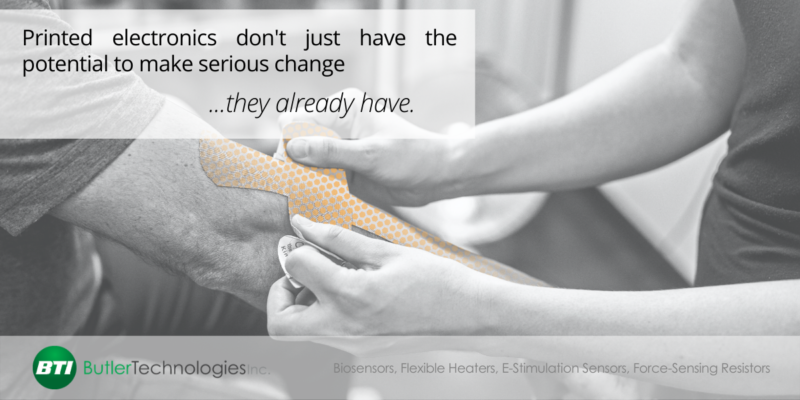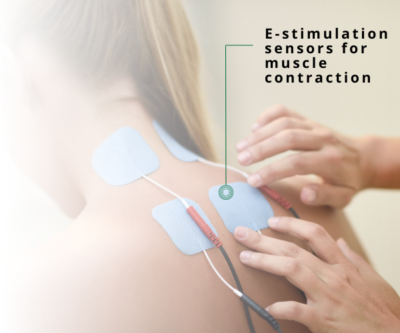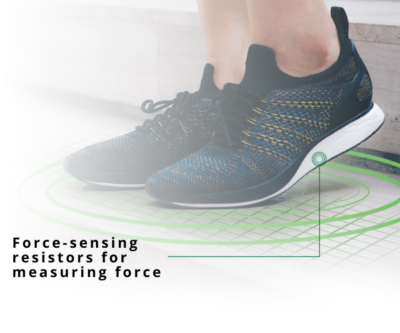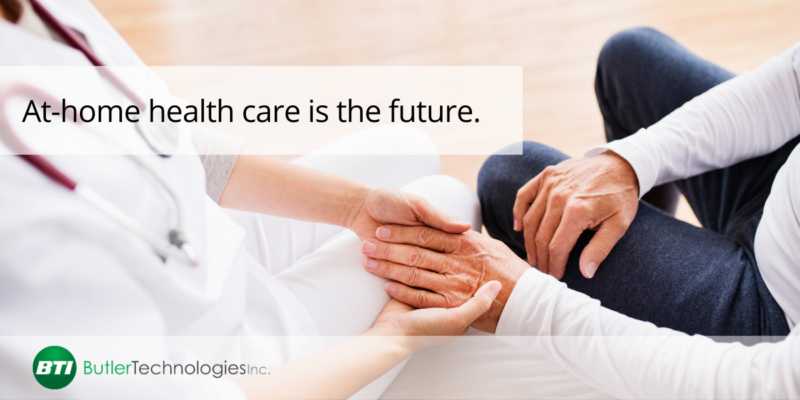As global populations grow and age, and chronic illnesses and pandemics like COVID-19 increase, healthcare systems across the world are likely to become overwhelmed. One strategy to keep up with demand while curbing overall costs is implementing virtual patient treatment and monitoring.
Intertwined with medical professionals’ ability to make sound decisions are patient vitals, which traditionally have been obtained by visiting a hospital, clinic, or laboratory. That’s why at-home or virtual healthcare was very limited and, in some cases, not a significant part of many medical providers’ service offerings. That is until flexible printed electronics revolutionized the ability to perform patient diagnostics and monitoring from a distance. Today, this industry is helping create the new normal in at-home healthcare.
The Printed Electronics Advantage
Flexible printed electronics are a catch-all for applications where special conductive inks with microscopic conductive silver particles are deposited onto pliable materials like fabrics or medical sticking plasters. The ink enables electricity to flow around the circuit, making it possible to create thinner, more flexible, and lower-priced alternatives to standard rigid circuit boards used to collect data. Other benefits of flexible printed electronics include:
- Aesthetically Pleasing
- Reliable
- Less Noticeable Form Factor
- Improved Performance
- Ease Of Production
- Flexible
- Ease Of Integration
- High Energy Savings
- Low Environmental Impact

These innovations don’t just have the potential to change at-home healthcare significantly. The fact is, they already have.
Providing Critical Care Without Leaving Your Home
Flexible printed electronics are used in remote patient monitoring devices, or RPMs, for various purposes, such as measuring a person’s weight, glucose level, heart rate, blood pressure, temperature, movement, oxygen, medication tracking, and more.
Increasing RPM innovation by manufacturers and adoption by healthcare providers will improve the capacity, convenience, and affordability of healthcare. Patients can spend less time in hospitals while remaining confident that medical professionals have a firm grasp of their health information. Underserved communities that have been hard to reach with conventional in-person treatment may notice improved access to first-rate medical care, too.
With RPMs driven by advanced printed electronics, patients receive better health outcomes while healthcare facilities curb overcapacity concerns.
Your Flexible Printable Electronics Source
Flexible printed electronics can support virtual healthcare outcomes in many ways: 
Biosensors
Lightweight, flexible, and precise, these sensors utilize electrodes to remotely collect patient vitals like blood pressure, heart rate, respiratory rate, brain activity, temperature, and hydration levels. They may help medical professionals improve care and workflow by immediately receiving notification of significant changes in patient vital signs.
Flexible Heaters
Despite the featherweight, pliable appearance, flexible heaters have a profound impact. They can help repair muscles, manage pain, and support knee or back brace stability. Furthermore, flexible heaters are perfect for heating up and loosening muscles before exercises, making physical therapy sessions easier, less painful, and more productive. 
E-Stimulation Sensors
Following traumatic injury, nerves in an impacted area have trouble communicating with the brain. By sending painless electronic pulses into specific nerves to make muscles contract, e-stimulation sensors can help spark that connection. Additionally, they have been shown to enhance workouts and speed up recovery times. 
Force-Sensing Resistors
If weight is distributed asymmetrically while walking or running, there may be underlying muscle imbalances or chiropractic issues. Capable of measuring applied force, flexible force sensors have been shown to help strike a balance between functionality, flexibility, and comfort. Flexible force sensors have been used for podiatry foot gate analyses and bedsore monitoring among other applications.
Monitoring What Matters Most
Remote patient monitoring or at-home healthcare will play a pivotal role in medical care moving forward, especially with the COVID-19 pandemic still impacting societies around the world.  When you’re ready to move your at-home healthcare device from design to finished product, Butler Technologies, Inc., is here to help. We have the design and manufacturing expertise needed to handle the complex challenges of remote patient monitoring equipment production.
When you’re ready to move your at-home healthcare device from design to finished product, Butler Technologies, Inc., is here to help. We have the design and manufacturing expertise needed to handle the complex challenges of remote patient monitoring equipment production.
Contact us to learn more about how printed electronics make quality home healthcare possible. We’re happy to discuss your project in greater detail.
Meet the Author

Courtney Houtz is the marketing lead for Butler Technologies, Inc. In her role, she is responsible for content strategy, branding, and project management. She is a graduate of Michigan State University with a degree in social relations and policy.
